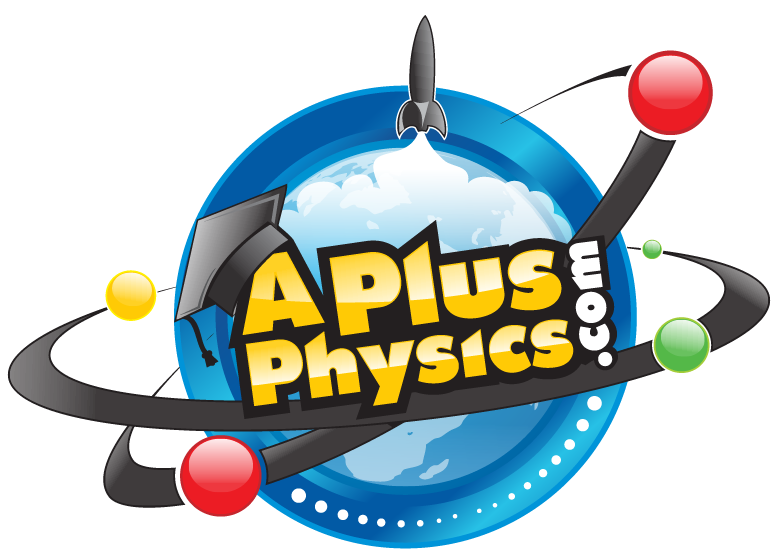-
Physics in Flux
-
Mr. Powlin
-
Blog willorn
-
Blog awalts
-
Santa Claus is REAL!!!
-
Blog coltsfan
-
Blog rWing77IHS
-
Blog soccergirl
-
Blog hoopsgirl
-
Blog caffeinateddd
-
Blog Sbutler93
-
Blog PhysicsInAction
-
Blog bazinga
-
Blog WoWAngela
-
Blog probablykevin
-
Blog NewFoundGlory
-
Blog DANtheMAN
-
Blog Soccerboy2003D
-
Blog moe.ron
-
Blog challengerguy
-
Blog bxh8620
-
Blog darkassassin
-
Blog ohyeahphysics
-
Radio
-
Blog jade
-
North Salem High School AP-B Physics Blog
-
Blog landshark69
-
Blog Tiravin
-
Blog flipgirl
-
questioning everything
-
emma123321's Blog
-
Blog goNavy51
-
Blog MrPhysics
-
Sara T's Blog
-
hollyferg's Blog
-
Blog lemonlime799
-
Stardust's Blog
-
Blog lacrosse12
-
Blog xcrunner92
-
Blog Bob Enright
-
Blog Swagmeister11
-
Blog ThatGuy
-
Blog Kapow
-
Blog Doctor Why
-
Blog [not]TheBrightestBulb
-
Blog Wunderkind5000
-
Blog daboss9
-
Blog OffInMyOwnWorld
-
Fg = (Fizzix)(Girl)
-
Blog 136861
-
Blog Albert Hawking
-
Blog gburkhart
-
Blog AldTay
-
Kat's corner
-
Danielle17's Blog
-
Mermaids Lagoon
-
RaRaRand
-
rtsully829's Blog
-
Patchy's Blog
-
skyblue22's Blog
-
HaleighT's Blog
-
dwarner's Blog
-
JBrown3's Blog
-
Christina H.'s Blog
-
Do cats always land on their feet?
-
LilBretz's Physics Blog
-
jay day
-
Blog smithr7
-
Blog keeth
-
PepperJack's Blog
-
jbilodeau's Blog
-
Physics Blog
-
Bugs Blog
-
blog 1
-
Blog jmcpherson82
-
Blog HannahG
-
Blog AlphaGeek
-
Blog sarabuckbee
-
Blog mathgeek15
-
Yay physics!
-
Blog goalkeeper0
-
Blog lshads
-
Dodgeball
-
Blog caffeinefueledphysics
-
Blog midnightpanther
-
CMaggio's Blog
-
Blog bdavis
-
Blog MrMuffinMan
-
Blog denverbroncos
-
Blog DavidStack
-
Blog CharlieEckert
-
Blog SwagDragon15
-
Blog jfrachioni
-
Blog PostMeister
-
NevinO's Blog
-
José P's Blog
-
JDiddyInDaHouse's Blog
-
npignato's Blog
-
Above & Beyond
-
AndrewB's Blog
-
The Awesome Blog
-
Pineapple Grotto
-
physics blog
-
JamesWil's Blog
-
How does Iron Man fly?
-
KC12
-
Physics of Cheerleading
-
Elijah35's Blog
-
Physics?
-
Blog HannahG
-
mgiamartino's Blog
-
ericaplukas' Blog
-
as151701's Blog
-
Physics yeah!
-
TayCro
-
ACorb16's Blog
-
Patricks Blog with friends
-
Patricks Blog with friends
-
CM YAAAAAHHHHH
-
Ben's Post
-
Wise words from Leon Sandcastle
-
What Is A CT Scan
-
Physics Blog
-
Physics Of Videogames
-
ClarkK's Blog
-
Darts
-
Euclidean Blog
-
jfrachioni's Blog
-
Momentumous' Blog
-
goalkeeper0's Blog
-
The Blog of SCIENCE
-
physics on roller coasters
-
physics on swimming
-
physics on softball
-
physics on bike riding
-
The Real Blog, the Best Blog
-
RTB24's Blog
-
Physics!
-
PHYSICS courtesy of Shabba Ranks.
-
physicsguy#1
-
Walsherific Blogging!
-
Give me you're best shot fysics
-
Tired and a little dehydrated
-
bazinga818's Blog
-
TerminalVelociraptor
-
ThatBlogOverThere
-
Blog Having Nothing to do with Physics
-
Sarcasm And Some Physics Too
-
MarcelaDeVivo's Blog
-
martella6's Blog
-
Physics in the real world
-
abbyeschmitz's Blog
-
michaelford3's Blog
-
imani2014's Blog
-
kpluk3's Blog
-
hannahz's Blog
-
Celisse_R's Blog
-
Stephanie528's Blog
-
reedelena's Blog
-
Brittany16's Blog
-
OksanaZ's Blog
-
ihsseniorhill
-
Lynn152461's Blog
-
bailliexx13's Blog
-
hann129's Blog
-
Celeena's Blog
-
necharles17's Blog
-
Ben Shelton's Blog
-
cierraw's reflection on physics class
-
Amanda's Blog
-
Abbeys Blog
-
dspaker's Blog
-
Chanae's Blog
-
Halo Physics
-
Sandra's Blog
-
anna's Blog
-
SabrinaJV's Blog
-
kenzie10's Blog
-
hecht0520's Blog
-
DianeTorres' Blog
-
sputnam14
-
mitchell44's Blog
-
physics
-
happytoast's Blog
-
Basketball44
-
physics around us
-
Theo Cup
-
Merkel's Blog
-
claremannion's Blog
-
maddiejeanne15's Blog
-
Basketball Physics
-
PfFlyer17
-
jackbowes10's Blog
-
mt8397's Blog
-
zach_memmott11's Blog
-
emvan2's Blog
-
michaela1707's Blog
-
Faith DeMonte
-
Physics with Marisa
-
kenzie10's Blog
-
Kirch's Blog
-
theantonioj's Blog
-
Joe13's Blog
-
Zachary Denysenko's Blog
-
Ficher Chem Co. Ltd: Crystal meth, Buy Research Chemicals Online
-
Celisse_R's Blog
-
Regents Physics
-
cyan1's Blog
-
Reflection on Physics Class (3rd quarter)
-
physicsgal1's Blog
-
cgl15's Blog
-
Beginner Blogger
-
Reflections on blogs
-
Fezziksphysics' Blog
-
Physics824
-
PhunPhysics's Blog
-
pinkblue2's Blog
-
aphysics15's Blog
-
kphysics15
-
GoArrows15's Blog
-
mphysics' Blog
-
physicsislife's Blog
-
A High Schooler's HP Blog
-
kphysics' Blog
-
dls715's Blog
-
Muchfungophysics!'s Blog
-
apfphysics15's Blog
-
Hot Dog! Is that science?!
-
purple15's Blog
-
sciencegirl123's Blog
-
atrestan15's Blog
-
Seriously, was there homework?
-
#Physicsislife
-
billnyethescienceguy's Blog
-
Novice Blogger
-
Science4Life's Blog
-
adeck15's Blog
-
physicsisawesome's Blog
-
Rules on How to Rule the Kingdom of Physics
-
Rules on How to Rule the Kingdom of Physics
-
Sam's Blogging Blog of Blogginess
-
ck's Blog
-
jgalla's Blog
-
thisregistrationsucks' Blog
-
AP Physics C - The Final Frontier
-
Playground of the Mind with Dan
-
Mike V.'s Physics Blog
-
ariannatorpey's Blog
-
Michael783's Blog
-
Michael783's Blog
-
JessByrnes717's Blog
-
JessByrnes717's Blog
-
kmiller0212's Blog
-
The Kowalski Dimension
-
joshdeutsch's Blog
-
tuttutgoose's Blog
-
tuttutgoose's Blog
-
Kylee's Physics Blog
-
ItownEagl3's Blog
-
Elenarohr's Blog
-
james000345's Blog
-
Blogging Assignment
-
Lia's blog
-
KalB's Blog
-
NatalieB's Blog
-
kyraminchak12's Blog
-
t_hess10's Blog
-
Bootsy:)'s Blog
-
Ameliaâ„¢'s Blog
-
moritz.zoechling's Blog
-
Wibbly Wobbly Timey Wimey Physics
-
Hannah K's Blog:-)
-
That AP Physics C blog doe
-
Mandy's Blog
-
Quinn's Blog
-
jacmags' Blog
-
kelsey's Blog
-
Haley Fisher Blog
-
Jman612's Blog
-
A-Wil's Physics C Blog
-
morganism2.0's Blog
-
mdeng351's Blog
-
heather_heupel's Blog
-
CoreyK's Blog
-
isaacgagarinas' Blog
-
Mary_E27's Blog
-
zach_m's Blog
-
D Best Blog posts
-
Grace21's Blog
-
Grace21's Blog
-
ally_vanacker's Blog
-
natemoore10's Blog
-
The Physics (or lackthereof) of The Hobbit
-
Fee-oh-nuh's Blog
-
Physcics in eating food
-
ErikaRussell's Blog
-
Djwalker06's Blog
-
aschu103's Blog
-
Evan Plattens blog
-
danvan13's Blog
-
AnnieB's Blog
-
Jwt's Blog
-
aj31597's Blog
-
miranda15's Blog
-
miranda15's Blog
-
Monigle123's Blog
-
The Physics of a Slapshot
-
devon000885's Blog
-
devon000885's Blog
-
jakeb168 blog
-
physics of my life
-
Danny's Blog
-
Matts blog
-
Ryanz18's Blog
-
Ryanz18's Blog
-
Alyssa's Blog
-
Tuskee's Blog
-
Physics in Running!
-
konneroakes' Blog
-
B-Reezy64's Blog
-
WanidaK's Blog
-
Physics in falling
-
Physics in falling
-
Physics everywhere
-
The Race
-
NYC physics
-
JamesG's Blog
-
Megan's Blog
-
mikedangelo13's Blog
-
Z824's Blog
-
How Gwen Stacy Died (Physics Version)
-
Harrison's Blog
-
Kgraham30's Blog
-
Physics in the Modern World
-
jazmine2497's Blog
-
Colby's Blog
-
Colby's Blog
-
All da Physics
-
Zmillz15's Blog
-
Walter Lewin
-
fminton20's Blog
-
Ryanz18's Blog
-
Ryanz18's Blog
-
Antonio Morales
-
PaperLand
-
stargazer14
-
Hannah's Blog
-
Just Some Thoughts on Physics
-
Nate's Blog
-
Anna's APC Blog
-
JesseLefler
-
A Diver's look at physics
-
Physic
-
IVIR GREAT's Physics
-
Physics Blog
-
Z's Blog
-
ZZ's Blog
-
Alpha Baker Gamma
-
Phyzx
-
a blog about physics
-
Ashley's Blog
-
Life
-
State of the Art Novel InFlowTech 1Gearturbine RotaryTurbo 2Imploturbocompressor One Compression Step
-
Nicole's Blog
-
Phys-X
-
Fun With Physics
-
Physics in the Real World
-
Physics and Video Games
-
Physics C and How it Relates to Me
-
My Life, Baseball and Physics
-
My Journey in Physics
-
CVs Blog
-
Blogs
-
Kerbal Space Program: Nicholas Enterprises
-
Actual Physics from an Actual Physics Student
-
A Blog
-
World of Physics
-
Kayla's Blog
-
So, I guess I signed up for another year of ap physics...
-
Physics take two
-
Dissertation writing service
-
eclark
-
Escort Directory
-
Physics of Video Games
-
An Physic
-
Paramount California University
-
Jeremy Walther
-
The Physics of Swimming
-
Physics Blog
-
RK's Physics Blog
-
AP Physics C Student Blog
-
jrv12's physics blog
-
Captain's Log
-
Physics blogs
-
Important Tips You Should Consider When Searching For A Dissertation Topic
-
About me
-
The Physics Behind Life
-
Aaron's Coverage
-
Home is Where Your Displacement is Zero
-
Dog with a Blog
-
Don't Stop Me Now
-
CLICKBAIT TITLE
-
Soccer News
-
A Queue of Posts
-
Dat Music Kid's Blog
-
Getting the most out of studying
-
Bogart's Blogging Bonanza
-
Foul ball physics
-
GoDissertationHelp
-
Affordable Assignment Help Services for Students
-
super hair pieces
-
Ficher Chem Co. Ltd: Buy crystal meth online
-
Difference between townhomes and townhouses?
-
John Quinn
-
Inter Mock Test Series
-
kalyan matka
-
Forex dedicated server
-
Satta matka result
-
kalyan matka
-
matka result
-
HIPAA Training
-
How to report an accident in 6 simple steps
-
DPboss
-
Naruto Party Supplies | Naruto Party Decorations
-
Definition of Speech Synthesis and Its Applications
-
Matka India
-
Matka Play
-
spouse visa australia
-
Legal translation Dubai
-
Satta Matka
-
You need to lay of and relax to get better mental health.
-
Matka Result
-
Matka Result
-
Kolkata Fatafat Tips
-
Improving your mental health
-
Matka
-
Satta Matta Matka
-
What is Offshore? Is it Legal?
-
A Shining Blog in Darkness
-
WHY DPBOSS IS MOST SEARCHED KEYWORDS INTO SATTA MATKA INDUSTRY?
-
Buy Travel Gear UK
-
Satta Matka Result
-
Delhi Satta King
-
Amar Satta Matka
-
Matka
-
Sex Is an Emotional Bonding Mechanism for Men
-
Are Coworking spaces worth the expenditure?
-
Trusted Online Matka app

